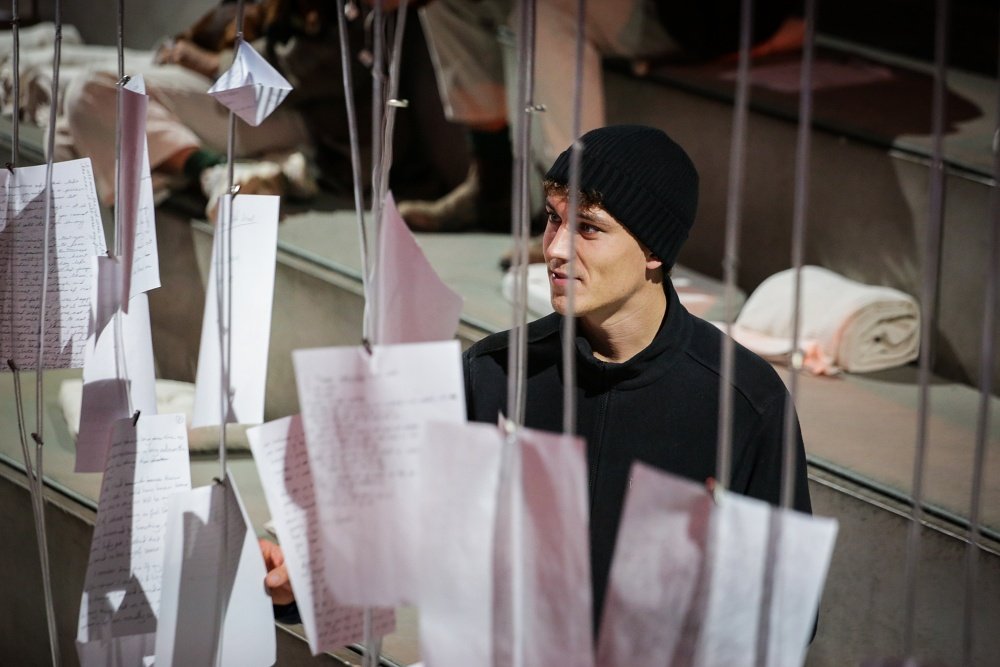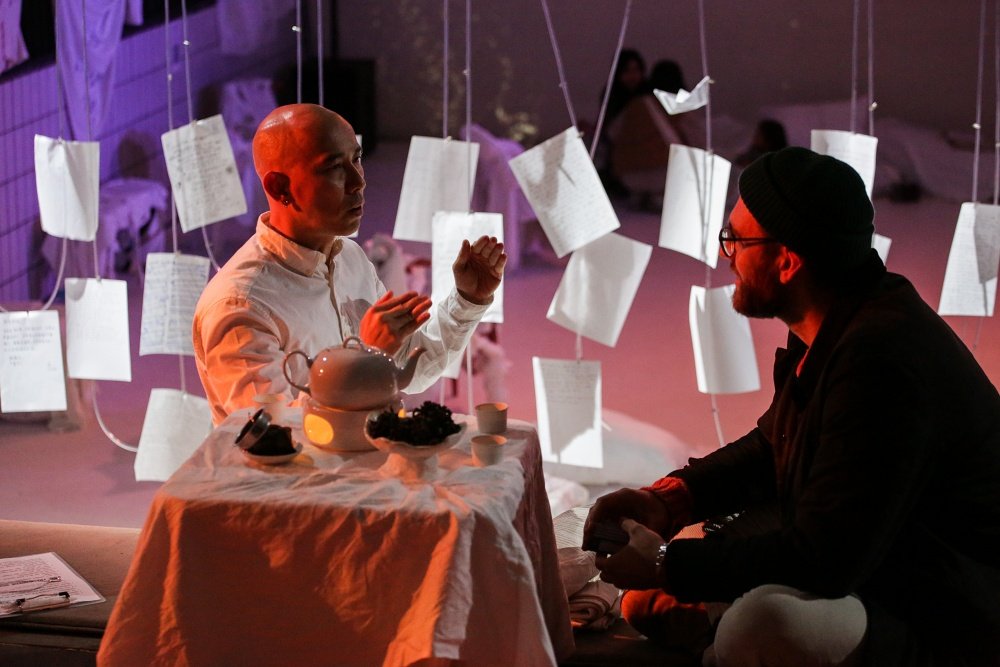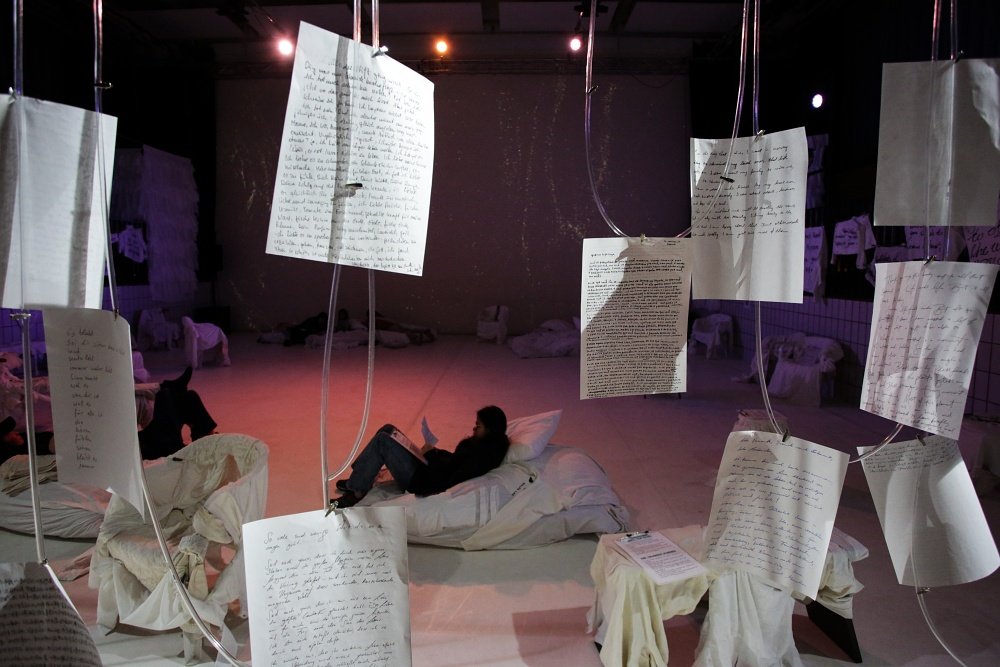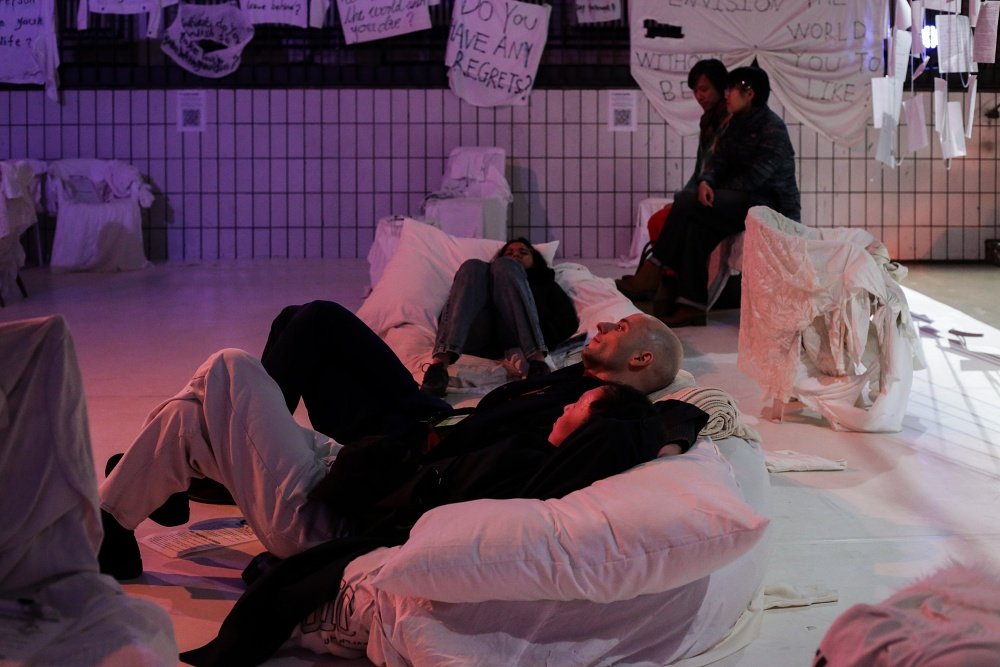
STARDUST
Participatory installation-cum-performances by Ming Poon
“To die means to live better.”
Performances as part of the installation:
October 20th - 27th, 2024 | Uferstudios Berlin
STARDUST looks at dying as an act of empowerment, self-transformation and radical care to address the social, political and ecological crises that we are currently facing. STARDUST is as much an artistic meditation on dying as it is on living. It hopes to give a glimpse of how closely interconnected we are to each other as humans, as well as to all non-humans and the natural world. By dying, we also let the power structures inscribed in us die, opening up the space for a future that is more caring and socially and ecologically just.
Over a period of eight days, STARDUST unfolds as an interactive, sensorial and living installation. Visitors are invited to write their own eulogies, listen to an audio guide (“Instructions for Dying”) or join in an intimate conversation about dying. The overarching narrative follows the eight stages of death transformation in Tibetan Buddhism: Earth, Water, Fire, Air, White Light, Red Light, Black Light and Clear Light. Based on this, the sound, light and video designs of the installation transform over the eight days. In addition, live sound recordings and an infrared tracking system are used to create a constantly changing live installation.
As part of the installation, seven performers (30 - 64 years old) take turns to perform their individual dying rituals each day. Their themes range from collective burial, letting go and disappearance to healing, remembering and connectedness. On the final day, they perform a group ritual, in which all the eulogies created are turned into dust – a reminder that we are all made of stardust.
Production: Ming Poon
Co-production: MIFRUSH Production
Funded by Hauptstadtkulturfonds
Space rental supported by the theaterhaus Berlin. The audio guide “Instructions for Dying” was commissioned by Tanz im August / HAU Hebbel am Ufer (2023). Special thanks to Dandan Liu and SOEX Textil-Verwertungsgesellschaft m.b.H. for the generous support
PHOTOS © Olivia Kwok
Participatory Installation
The space of the installation is conceived both as a dying body and a catacomb. To reflect the process of dying, the space transforms over a period of eight day. Each day is dedicated to one of the eight stages of death transformation in Tibetan Buddhism: Earth, Water, Fire, Air, White Light, Red Light, Black Light and Clear Light. Through the light, sound, video and spatial designs, it attempts to highlight the cyclical rhythm of life, which includes dying, and the liveness of the dying process. Both the light and video in the installation are designed to follow the sun’s movement to reflect the passage of time, while the sound captures live environment sounds to create a soundscape of the dying body. Recycled clothes and fabrics, all in white color, are the main materials used in the installation. White is a color often associated with death in many cultures, and the used clothes and fabrics refer to the past lives of humans and things. All these elements work in tandem to create the sense of a constantly changing and living space.
Visitors are invited to write their own eulogies, listen to the audio guide or have an intimate conversation about dying. As the installation is intended to be experienced as an artistic meditation, visitors are encouraged to take as much time as they need to experience it. Bean bags, cushions, blankets and chairs are available to make their visit as comfortable as possible.





Performative rituals
Day 1 (Earth): “Cemitério do Caju” by hugo-huga x tibiriçá
Day 2 (Water): “Das Wasser am Morgen, das Wasser am Abend” by Hilla Steinert
Day 3 (Fire): "Ritual of Contingency” by Lee Mun Wai
Day 4 (Air): “Abendempfindung” by Birte Opitz
Day 5 (White Light): “Skin to dust” by Vera Shchelkina
Day 6 (Red Light): “shards and dust” by Veronika Heisig
Day 7 (Black Light): “Ha’this” by Lisa Stertz
Day 8 (Clear Light): “We are all made of stardust” by Ming Poon in collaboration with the performers
Seven performers (30 – 64 years old) with different practices, experiences and backgrounds have been invited to create and perform their personal dying rituals. Their themes range from collective burial, letting go and disappearance to healing, remembering and connectedness. Each day, one of them performs their personal ritual. On the final day, they come together to perform a group ritual, in which all the eulogies hanging in the installation are turned into dust – a reminder that we are all made of stardust.
The rituals can be experienced as individual acts or as one continuous interconnected process going through the eight stages of death transformation in Tibetan Buddhism: Earth, Water, Fire, Air, White Light, Red Light, Black Light and Clear Light.
-
Artistic Direction & Choreography: Ming Poon
Performance: Veronika Heisig, Lee Mun Wai, Birte Opitz, Vera Shchelkina, Hilla Steinert, Lisa Stertz, hugo-huga x tibiriçá
Choreographic Assistance: Nora Tormann
Stage Design: Sichi Li
Stage Design Assistance: Sangyeon Lee
Lighting Design: Raquel Rosildete
Lighting Design Assistance: Alexandra Úhlarová
Sound Design: Haesoo Jung
Voice (Audioguide): AngieM (EN), Sandra Hetzl (DE)
Video & Projection Design: Harshini J. Karunaratne
Costume Design: Tin Wang
Technical Direction: Frieder Miller
Relaxed Performance: Agnieszka Habraschka
Audio Description: Irene Baumann
Audio Description Co-Authorship: Johanna Krins
Care Person & Death Doula: Alessa Rhode
Graphic Design: Hung Kieu
Video Documentation: Isabelle Schmitz
Photo Documentation: Olivia Kwok
Public Relations: Marcelo Vilela da Silva
Press Relations: Tom Müller-Heuser
Production Management: MIFRUSH Production (Micaela Trigo & Urszula Heuwinkel)
Production Management Assistance: Nur Bildik










